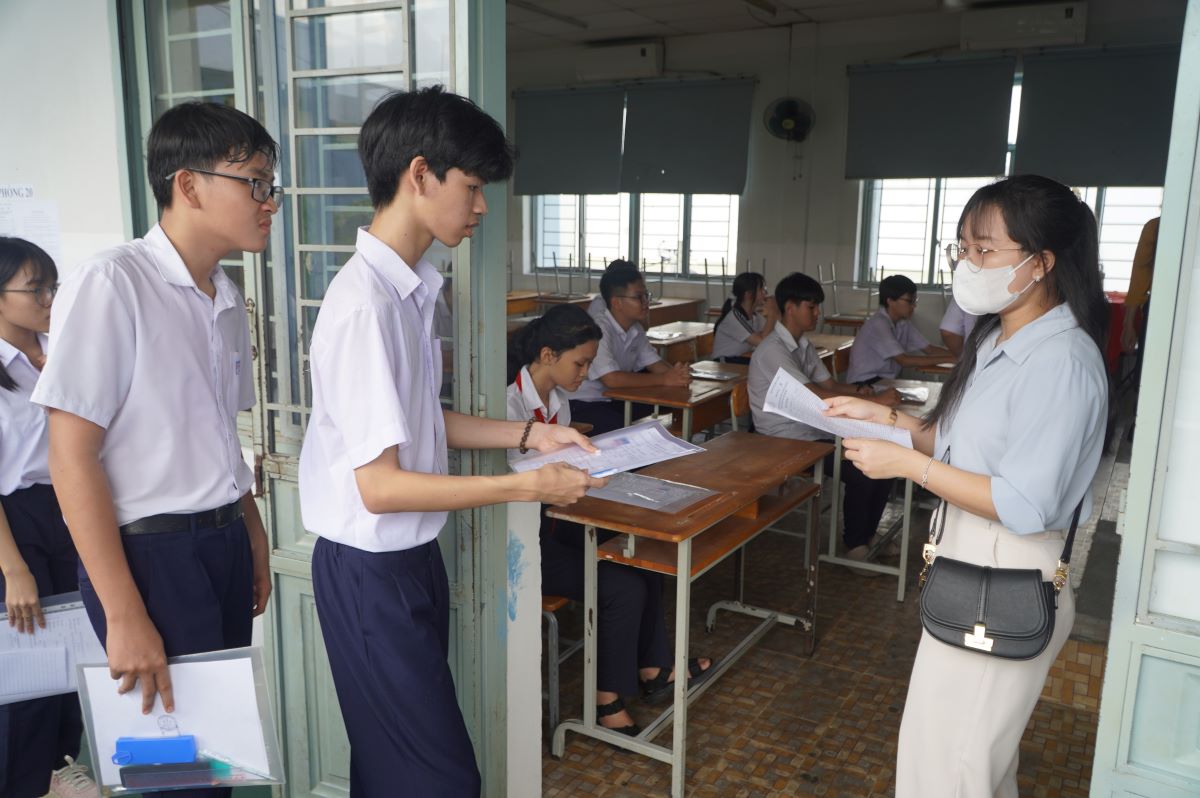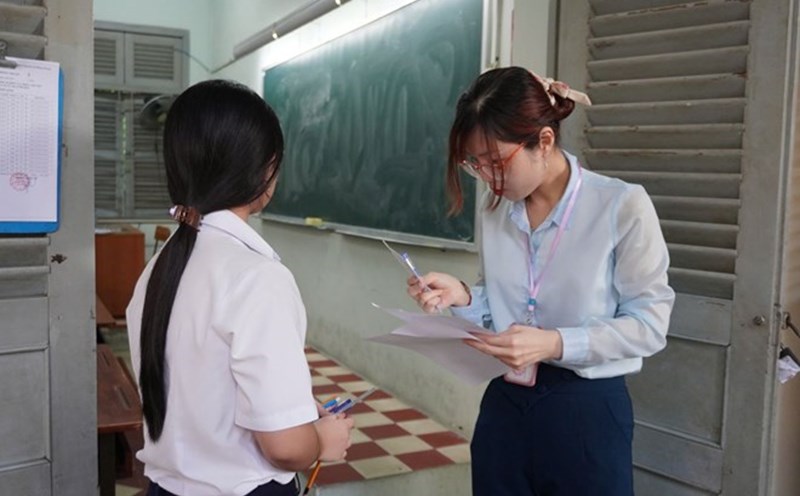According to the Department of Education and Training (GDDT) of Ho Chi Minh City, the exam is built in the direction of assessing capacity, reducing the need for in-depth learning and increasing the level of applying knowledge to practical situations.
In Literature, the test structure consists of two parts with the main content in the 8th and 9th grade programs. The reading comprehension section combines both literary documents and speech documents or information.
Math includes knowledge of formed formed formed formed in the fields of geometry, measurement; numbers and coefficients; statistics and probability, in which practical application questions account for a larger proportion.
The English subject has 40 questions, evaluating amoglyphs, words - grammar to reading comprehension and communication skills, adding a test format that requires students to write phrases in accordance with the given information.

Mr. Cao Duc Khoa - Principal of Nguyen Du Secondary School (Ben Thanh Ward), said that the reference exam clearly demonstrates the spirit of innovation, forcing students to study practically, understand the nature, and cannot study at the club or play at the club.
According to him, including social issues and life phenomena in reading comprehension of Literature is in line with the goal of assessing learners' abilities.
In Math, questions not only require students to master knowledge but also require students to apply it in practice, associated with real-life situations.
Meanwhile, English approaches new competency standards, requiring students to use flexible language in real-life settings, instead of just learning grammatical skills.
From the school's perspective, Mr. Khoa said that preparation for the exam needs to be carried out according to a clear roadmap, and prepared right now.
Wherever teachers teach, they need to localize knowledge, helping students grasp and remember it for a long time, instead of putting pressure on the end of the year. After completing the program around April 2026, students will enter the consolidation stage, review focus and get acquainted with the exam format.
According to Mr. Khoa, the time from the end of April to May is enough for students to systematize their knowledge without being overloaded.

Sending advice to parents in the process of accompanying their children, Mr. Khoa emphasized that extra learning is not a decisive factor.
"There is no need to send my children to school too many places. The most important thing is that they have a solid grasp of basic knowledge and know how to apply theory to their work. studying too many places only makes students tired, even confused in knowledge," he said.
He believes that parents and students need to allocate reasonable time between studying, resting, and self-study. When there is a good foundation and appropriate methods, students will be more confident and not under heavy pressure during the exam preparation stage.
After the merger, Ho Chi Minh City has the largest education sector in the country, with nearly 2.6 million students, more than 3,500 schools and 110,000 teachers at all levels.
In the 2025-2026 school year, Ho Chi Minh City has about 150,000 grade 9 students studying at secondary schools.
The public 10th grade entrance exam for the 2026-2027 school year is expected to take place around the beginning of June 2026.











